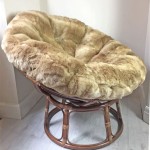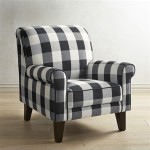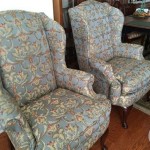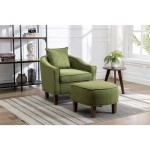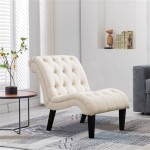Chair Made Out Of Skis: A Sustainable and Stylish Seating Solution
The creation of furniture from repurposed materials has gained significant traction in recent years, driven by environmental consciousness and a desire for unique, character-rich pieces. Among the diverse range of upcycled furniture, the chair made from skis stands out as a particularly compelling example. This unique piece not only offers a functional seating solution but also embodies a narrative of sustainability, adventure, and aesthetic appeal. The concept involves taking discarded or surplus skis—often sourced from ski resorts, rental shops, or individual owners—and transforming them into a structurally sound and visually striking chair.
The process of creating a ski chair requires careful planning, meticulous execution, and a deep understanding of both structural engineering and woodworking techniques. The skis themselves, typically constructed from wood, fiberglass, and metal, possess inherent strength and durability, making them ideal for load-bearing applications. However, their original design is intended for gliding across snow, not supporting human weight. Therefore, the design and construction process must address these challenges, ensuring the resulting chair is both safe and comfortable.
The appeal of a ski chair extends beyond its functional purpose. It evokes a sense of nostalgia, connecting the user to the thrill of winter sports and the beauty of mountain landscapes. Each ski, often bearing the marks of previous adventures, carries a unique story, adding character and personality to the finished piece. Moreover, the use of recycled materials aligns with the growing global emphasis on environmental responsibility, offering a tangible way to reduce waste and promote sustainability. The aesthetic versatility of ski chairs further enhances their appeal. They can be customized to fit a variety of interior design styles, from rustic and contemporary to eclectic and minimalist. The vibrant colors and graphics found on skis provide ample opportunities for creating visually engaging and eye-catching furniture.
Structural Considerations and Design Principles
The structural integrity of a ski chair is paramount. The design must account for the distribution of weight and stress across the various components. Skis, while strong lengthwise, may be less resistant to bending or twisting forces applied perpendicularly. Therefore, the design typically incorporates a supporting framework, often constructed from wood or metal, to reinforce the ski structure and distribute the load evenly. The choice of materials for the framework is crucial, as it must be compatible with the skis in terms of strength, durability, and aesthetic appearance. Wood is a popular choice, offering a natural and complementary look. Metal frameworks, on the other hand, provide greater strength and stability, especially for larger or more complex chair designs. The joinery techniques used to connect the skis and the framework are also critical. Strong, durable joints are essential to prevent the chair from collapsing under weight. Common joinery methods include screws, bolts, adhesives, and mortise-and-tenon joints.
The angle and placement of the skis play a significant role in both the structural stability and the aesthetic appeal of the chair. The skis may be positioned vertically to form the legs of the chair, horizontally to create the seat and backrest, or diagonally to provide structural support and visual interest. The choice of configuration depends on the desired style, the size and shape of the skis, and the overall design concept. It is important to consider the ergonomics of the chair to ensure it is comfortable to sit in for extended periods. The height and angle of the seat, the backrest support, and the presence of armrests all contribute to the overall comfort and usability of the chair. Padding or cushioning can also be added to enhance comfort, particularly for the seat and backrest.
The overall design of a ski chair can range from simple and minimalist to elaborate and intricate. Some designs focus on showcasing the original skis, preserving their colors, graphics, and even their existing bindings. Other designs may involve cutting, shaping, and reassembling the skis to create more complex forms. The choice of design depends on the skills and creativity of the builder, as well as the desired aesthetic and functional requirements of the chair. Regardless of the design, it is essential to prioritize safety and structural integrity to ensure the chair is a reliable and enjoyable piece of furniture.
The Process of Building a Chair from Skis
Constructing a chair from skis is a multi-step process that requires careful planning, precise measurements, and a range of woodworking tools and skills. The first step involves sourcing the skis. This may involve contacting ski resorts, rental shops, or individuals who are looking to dispose of old or damaged skis. Once the skis have been acquired, they must be thoroughly cleaned and inspected for any damage. Any broken or severely damaged skis should be discarded or used for smaller, less critical components of the chair. After cleaning and inspection, the skis must be prepared for construction. This may involve removing the bindings, sanding down rough edges, and applying a sealant or varnish to protect the wood and enhance its appearance.
Next, the design of the chair must be finalized. This may involve sketching out different ideas, creating a 3D model of the chair, or simply improvising as the construction progresses. It is important to consider the overall dimensions of the chair, the placement of the skis, and the type of framework that will be used to support the structure. Once the design is finalized, the materials for the framework must be selected and prepared. This may involve cutting lumber to size, welding metal pieces together, or creating mortise-and-tenon joints. The framework should be constructed to provide a stable and durable foundation for the skis. With the skis and the framework prepared, the next step is to assemble the chair. This may involve attaching the skis to the framework using screws, bolts, adhesives, or other fastening methods. It is important to ensure that the skis are securely attached to the framework and that the joints are strong and durable.
After the chair has been assembled, it can be finished with a sealant, varnish, or paint to protect the wood and enhance its appearance. Padding or cushioning can also be added to the seat and backrest to improve comfort. The final step is to inspect the chair for any defects or weaknesses and to make any necessary adjustments. The finished chair should be strong, stable, and comfortable to sit in. The creation process requires familiarity with safety protocols when using power tools, wearing appropriate safety gear such as eye protection and gloves is essential.
Environmental and Aesthetic Benefits
One of the most significant benefits of creating chairs from skis is the positive environmental impact. By repurposing discarded skis, the process reduces the amount of waste sent to landfills, conserving valuable resources and minimizing pollution. Ski equipment, often made from composite materials, can be difficult to recycle, making upcycling an even more attractive alternative. The environmental benefits extend beyond waste reduction. The process also reduces the demand for new materials, conserving energy and reducing greenhouse gas emissions associated with manufacturing. By choosing a ski chair, consumers are making a conscious decision to support sustainable practices and reduce their environmental footprint.
The aesthetic appeal of ski chairs is undeniable. Each chair is unique, reflecting the individual history and character of the skis used in its construction. The vibrant colors, graphics, and wear marks on the skis create a visually engaging and eye-catching piece of furniture. Ski chairs can be customized to fit a variety of interior design styles, from rustic and contemporary to eclectic and minimalist. They can be used as accent pieces in living rooms, bedrooms, or home offices, adding a touch of personality and charm to any space. The chairs contribute to a sense of rustic charm and connection to the outdoors. They are often favored as conversation pieces, sparking stories and memories of winter adventures.
The use of repurposed materials also adds a layer of authenticity and character to the furniture. Unlike mass-produced furniture, ski chairs possess a unique story and a sense of history. They are a tangible reminder of the importance of sustainability and the beauty of creativity. The aesthetic versatility of ski chairs allows them to be incorporated into a wide range of design schemes. They can be paired with other recycled or upcycled furniture to create a cohesive and eco-friendly interior. They can also be used to add a touch of whimsy and personality to more traditional spaces. The possibilities are endless, limited only by the imagination of the designer.

Sentimental Ski Bench Made From Your Old Skis Repurpose Downhill Porch Outdoor Furniture Keepsakes Etsy

Diy How To Build An Adirondack Chair Out Of Skis Uncommon Path Rei Co Op Publication

Sentimental Ski Chair Made From Your Old Skis Colorado Chairs

Build A Lawn Chair From Recycled Skis The Ski 4 Steps With S Instructables

Adirondack Chair Made With Reclaimed Snow Skis Etsy

Upcycled Adirondack Ski Chair Maker Marketplace

Sundog Ski Chairs

Snowskool Diy What Do To With Your Old Gear

Mi Ski Bum Original Adirondack Chair 1011 L Bill Paul S Grand Rapids

Pin By Erica Weibo On Art Adirondack Chair Plans Ski House Decor
